In the China International Automotive Intelligent Manufacturing Development Seminar, which ended recently, Zhang Guofang, deputy dean of the School of Automotive Engineering at Wuhan University of Technology, gave a figure of 35 million vehicles when analyzing the upper limit of the production capacity of the Chinese auto market. He believes that the Chinese auto industry has completed the final round of capacity expansion, and as the market competition accelerates, the development turning point is approaching.
"It is not excluded that the number of thousands of people in some central cities in China can reach the European level. However, considering China's national conditions, especially population distribution and land utilization, the overall level of possession is unlikely to catch up with the United States. It is more realistic to approach South Korea." Zhang Guofang estimates At present, China's car ownership exceeds 170 million. If it is calculated according to the number of 1,000 people, the limit and peak of China's car ownership is 400-500 million.
At present, the production capacity of the Chinese automobile market is more than 20 million, and the data predicted by Professor Zhang is still more than 10 million. It is hard to imagine adding another 10 million vehicles. What kind of form this market will develop into. But one thing is certain, as the Chinese auto market enters a stage of micro growth. 350 million vehicles may mean 10 years and longer to complete.
How the automobile industry plays an important role in “Made in China 2025†Dong Yang, executive deputy secretary-general of China Automobile Association, remains optimistic about the Chinese auto market. Although the development rate last year was relatively slow, it dropped to about 4%. But the future will definitely bottom out, he expects the car market growth in 2016 will be more than 6%. In addition, Dong Yang proposed at the recent Tsinghua University Automotive Industry Summit Forum that the Chinese automobile industry should play an important role in China Manufacturing 2025.
"In the next five years, it will definitely be the fastest growing period for China's auto industry's innovation capability. Because during the '13th Five-Year' period, the money spent on innovation is definitely greater than in the past." Dong Yang said, "Our output value has increased, companies More attention, the proportion of investment increased. And 'Made in China 2025', I think the automotive industry should be the protagonist. If the German industry is said to be 4.0, then I think the Chinese industry's automotive industry is 3.0. In Germany In Industry 4.0, the automotive industry is the main technology pillar, and it should be the same in China."
Talking about the future development speed of the automobile industry, Dong Yang said, “It should not be too fast or too fast.†The growth of production and sales should be equal to the growth of GDP, while the growth of sales, growth and related taxes should be higher than the industrial average. Speed ​​up.
The author believes that the current car market is at the turning point of the times. Traditional car companies, especially self-owned brand car companies, want to lead China's manufacturing 2025. They must proceed from their own, develop and adapt to the trend of the times. Under the momentum of the Internet, traditional car companies are indiscriminate.
Whether it is the Internet of Vehicles or the automatic driving, in the process of intelligent car, it is inseparable from the support of the wireless communication network for the car, and the operator has an absolute advantage in the wireless communication network, which is beyond doubt. In other words, both Chinese car companies and international car companies need to develop their own autonomous driving with the advantage of operators. Only a strong alliance can achieve a win-win situation.
How is the government playing a high subsidy for the guides?
With the annual report of various listed car companies, in 2015, a total of 22 listed car companies received high government subsidies, totaling more than 11 billion yuan, and it is worth mentioning that this is the end of 2014. The data is 7.3 billion yuan. In just one year, the government's subsidy quota has increased by as much as 60%.
Under the high subsidy, the total net profit of 22 car companies in 2015 was 64.396 billion yuan, but its net profit of 18.35% was contributed by subsidies. Even among the 22 car companies, there is no shortage of subsidies exceeding the company's net profit.
Although at present and for a long time, independent brands are in a weak position in the contest with foreign and joint venture brands, the government can provide certain subsidies to help the self-owned brands to shorten the gap with the strong. But the current problem is that government subsidies seem to have the advantage of being "excessive."
With the accelerating marketization of Chinese brands, in the long run, the survival model that relies too much on policy transfusion is definitely not conducive to the development of Chinese brand car companies. The government's huge subsidies have caused some car companies to survive even if their products and technologies are not competitive, with sales of only a few hundred vehicles, more than a thousand vehicles, and even years of losses. There may even be a situation of putting the cart before the horse. The state subsidies are used to support enterprises in research and development and production, rather than to allow some enterprises to “fraud†the state's subsidies.
In addition, relying on government subsidies will keep car companies in a “greenhouse†environment, which is not conducive to the sound development of the Chinese auto market. Especially when the Chinese brand develops into a bottleneck stage, it is not conducive to industrial upgrading and competitiveness.
Summary 35 million vehicles may be the ultimate goal we can foresee. Rather than paying more attention to the results, it is better to focus on the process of achieving this goal. Independent brands are looking for ways to enhance their value, and major joint venture brands are beginning to lay out in advance in various market segments. Joint venture brands with broad market coverage are now striving for further market share through their brand influence and market base. In the future, the Chinese auto market will still be a prosperous scene of a hundred schools of thought. The SUV is already a scorched earth. What will be the next fierce battle? We will wait and see.
Stamping includes a variety of sheet-metal forming manufacturing processes, such as punching using a machine press
or stamping press, blanking, embossing, bending, flanging, and coining.This could be a single stage operation where
every stroke of the press produce the desired form on the sheet metal part, or could occur through a series of stages.
The process is usually carried out on sheet metal, but can also be used on other materials, such as polystyrene.
1. Material: Aluminium6061/6063/7075/5052 etc,
Stainless steel303/304/400/316, SteelQ235,20#,45#etc,
Brass:C36000(C26800), C37700(HPb59), C38500(HPb58),C27200(CuZn37),C28000(CuZn40) etc,Copper;
Beryllium bronze copper.
2.Process: CNC turning,CNC milling, CNC grinding;CNC lathe machining, CNC boring;CNC drilling, surface treatment
3.Surface treatment:Hardness anodizing black/clear, steel oxidizing dark-blue, electro-polishing, electroless nickel plating, silver plating, golden plating etc
4.Maine equipment :Machining center, CNC, Lathe, Turning machine, Milling machine, Drilling machine, Internal and external grinding machine, Cylindrical grinding machine, Tapping drilling machine, Wire cutting machine etc.
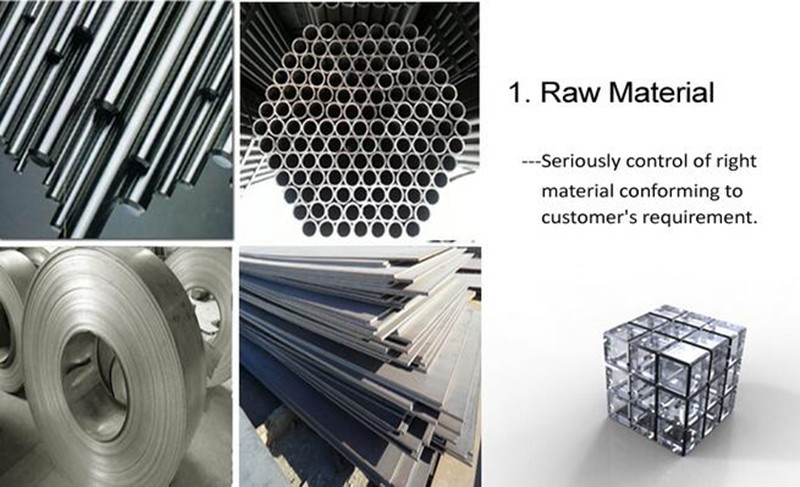
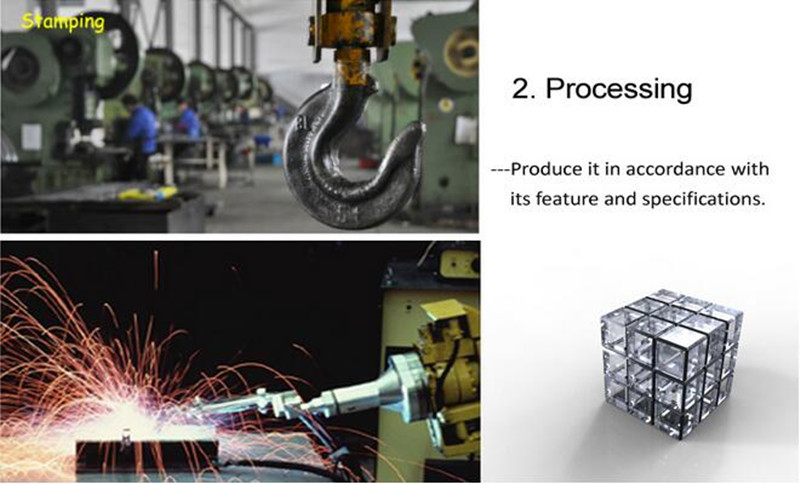
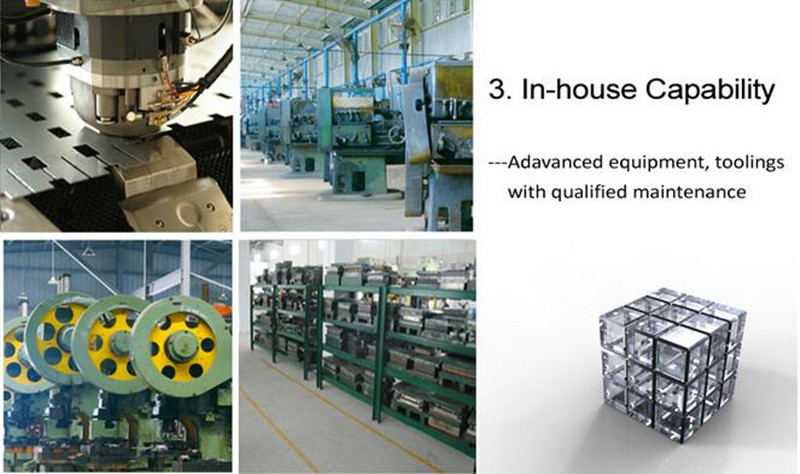
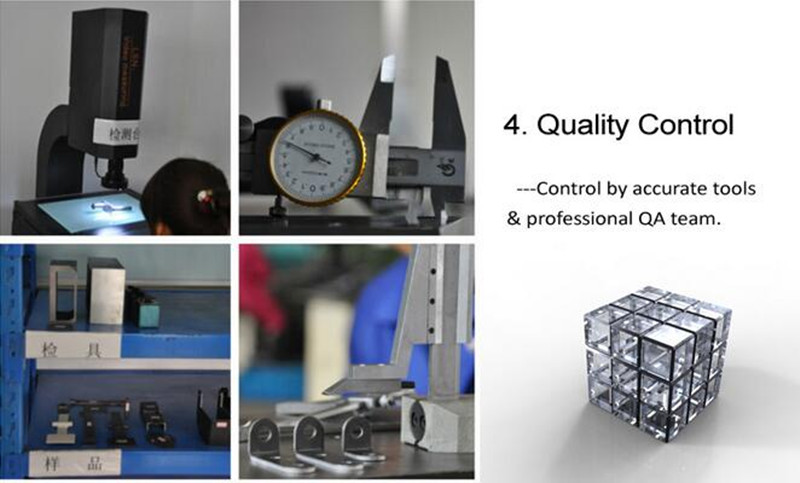
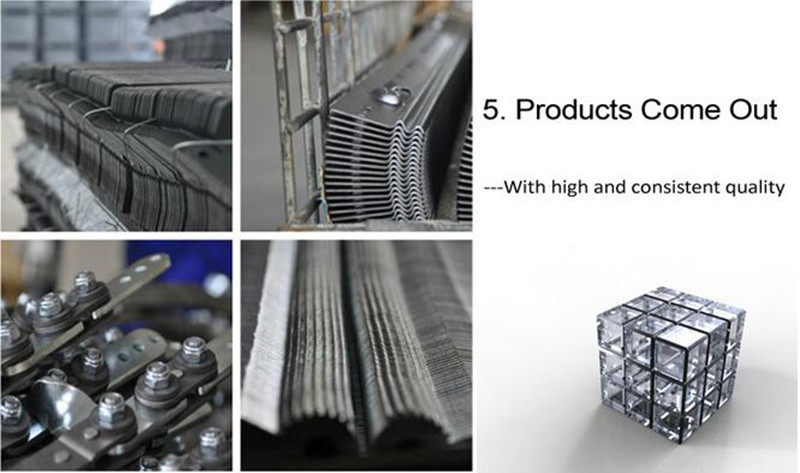
Stamping Parts,Metal Stamping Part,Metal Stamping Parts,Sheet Metal Stamping Parts
Hebei Mingda International Trading Co.,Ltd , https://www.amazingcastings.com